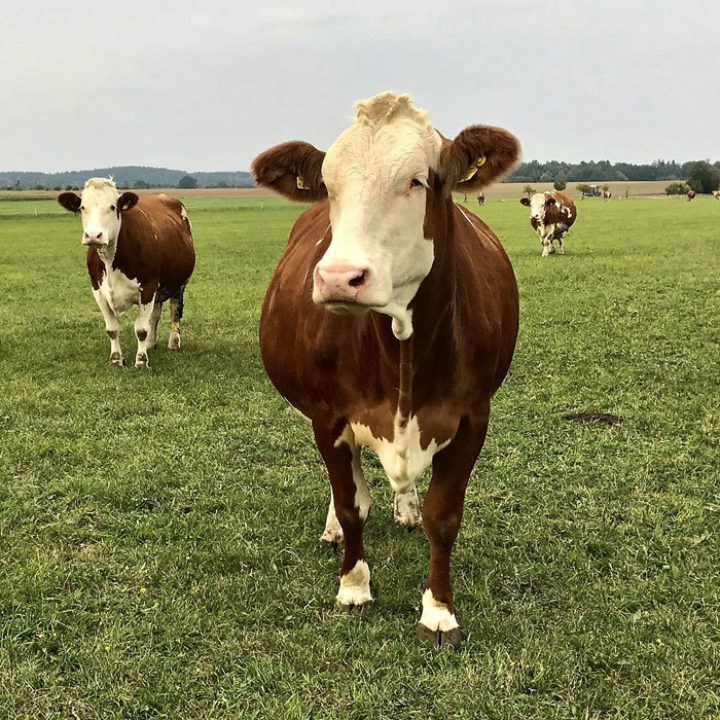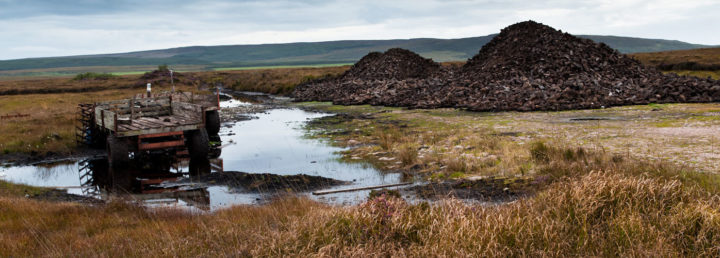IPCC lays out menu of land choices
UN report homes in on nexus of food, nature and climate regulation
By Richard Black
Share
Last updated:
For years we’ve been ‘fed’ the notion – if you’ll forgive the expression – that stopping climate change means stopping eating meat, or at least slimming it down massively.

It’s a question that’s surfacing again right now with the publication this week of the latest Special Report from the Intergovernmental Panel on Climate Change (IPCC), on Climate Change and Land... much coverage of which has focussed on 'recommendations' it's supposed to have made on reducing meat consumption.
Although of course the report does look at a dietary switch away from meat - or at least some meat - it certainly doesn’t recommend a mass switch to vegetarianism or veganism, or anything approaching it. That’s for two reasons:
- IPCC reports don’t ‘recommend’ anything – it’s not what they’re for. They’re expert distillations of available evidence, offering options to policymakers rather than recommendations
- While it does contain cautionary words on the impact of livestock-rearing, it can’t put a number on the extent to which meat-eating might need to fall because there are so many other factors which could affect that number – including what other carbon-cutting policies governments enact.
In fact, the overall message on diet is rather similar to that which the UK’s Committee on Climate Change produced in April, in its report recommending that the government should set a net zero emissions target for 2050.
That report suggested that UK net zero might need a dietary shift in the order of a 20% away from beef, lamb and dairy towards other foods, including lower-carbon meats such as pork or poultry.
A fall in red meat consumption of 20% in 30 years is pretty much business-as-usual, with the rise of ‘flexitarianism’ amid concerns over health and animal welfare. And it’s reasonable to expect that this trend might accelerate, as food entrepreneurs from designer burger chains to Greggs Bakery develop increasingly satisfying replacements for meat products.
So – the CCC’s menu contains no starvation rations for UK. And neither, on its global tableau, does the IPCC’s… at least, not necessarily.
Choices, choices
This IPCC report is best seen as a smorgasbord of choices.

At the top level, there’s the very basic choice of how much governments choose to restrict climate change.
As previous IPCC reports have done, this one makes clear that the further temperatures rise, the more disruption we can expect to weather patterns, to the natural world and to food security.
It suggests there are tipping points where risks become severe, but stops short of specifying exactly where those tipping points lie – generally, they’re between about 1.5 and 3 degrees Celsius of global warming.
Then there’s a menu of options for curbing greenhouse gas emissions from within the land use sector. They include:
- Cutting food waste (between a quarter and a third of food is wasted, and the greenhouse gas emissions associated with its production are, obviously, emitted to no useful purpose)
- Adopting farming methods that conserve carbon in the soil, such as no-till agriculture
- Switching livestock to diets that reduce methane emissions
- Protecting and enhancing forest cover, peat and mangroves.
Ultimately, though, if governments want to halt climate change, governments will need to do more than stopping land use from emitting greenhouse gases.
For that, the world’s land will need to be a net absorber of carbon dioxide from the air, on a large scale and year after year. Otherwise it is vanishingly hard to see how net greenhouse gas emissions can fall to zero and then become negative, which is likely to be needed to keep global warming below the targets set in the Paris Agreement.
And making land use overall ‘net negative’ entails using large tracts of it. Either for forests that absorb carbon dioxide, or for plantations of energy crops that can be burned in power stations which capture and bury the carbon dioxide produced.
The IPCC report is crystal clear that doing this on a large scale would compromise the area of land available for producing food and providing habitat for wildlife and nature. Again, the numbers it gives aren’t exact, but the principle is well-established and really non-controversial.

And herein lie the most important two sets of choices.
Land use accounts for about a quarter of greenhouse gas emissions. So while reducing those emissions is clearly necessary in order to meaningfully constrain climate change, it also leaves three-quarters of emissions that come from somewhere else – generally, the burning of coal, oil and gas.
The more that fossil fuel use is reduced, then, the less the pressure on land – the lower the need to slash farming emissions, the lower the need to use forests and nature as an absorber of CO2.
So much is commonsense, but it is probably the biggest useful takeaway from the IPCC report.
The second set of choices is how governments choose to go about policymaking – in particular, how they choose to treat business.
The IPCC is crystal clear that the better land use is planned, the greater the chance of delivering all desirable aims – feeding humanity, safeguarding the climate and keeping nature healthy - rather than having these aims competing with each other.
But in general, land use is anything but planned.
An example. Earlier this week I was talking to someone I meet occasionally on the way to work, who works for a financial house in London. His firm wants to bring its operations to net zero... which entails, he said, largely paying for carbon absorption in developing countries. Many other companies – including most of the global aviation industry – are taking a similar approach.
While each of these commercial decisions has its own internal logic, does it collectively add up to the co-ordinated, thought-through, synergistic approach that the IPCC’s analysis highlights?
Er – no. And that’s just one among dozens of examples of real-world developments in land use that could compromise achievement of the net zero world necessary to halt climate change.
But the more governments fail to plan both their low-carbon transition and their land use, the greater the pressure on land… and, perhaps, on diet.
No prescriptions from the IPCC, then, and no starvation regime. But an important laying out of choices.
Share